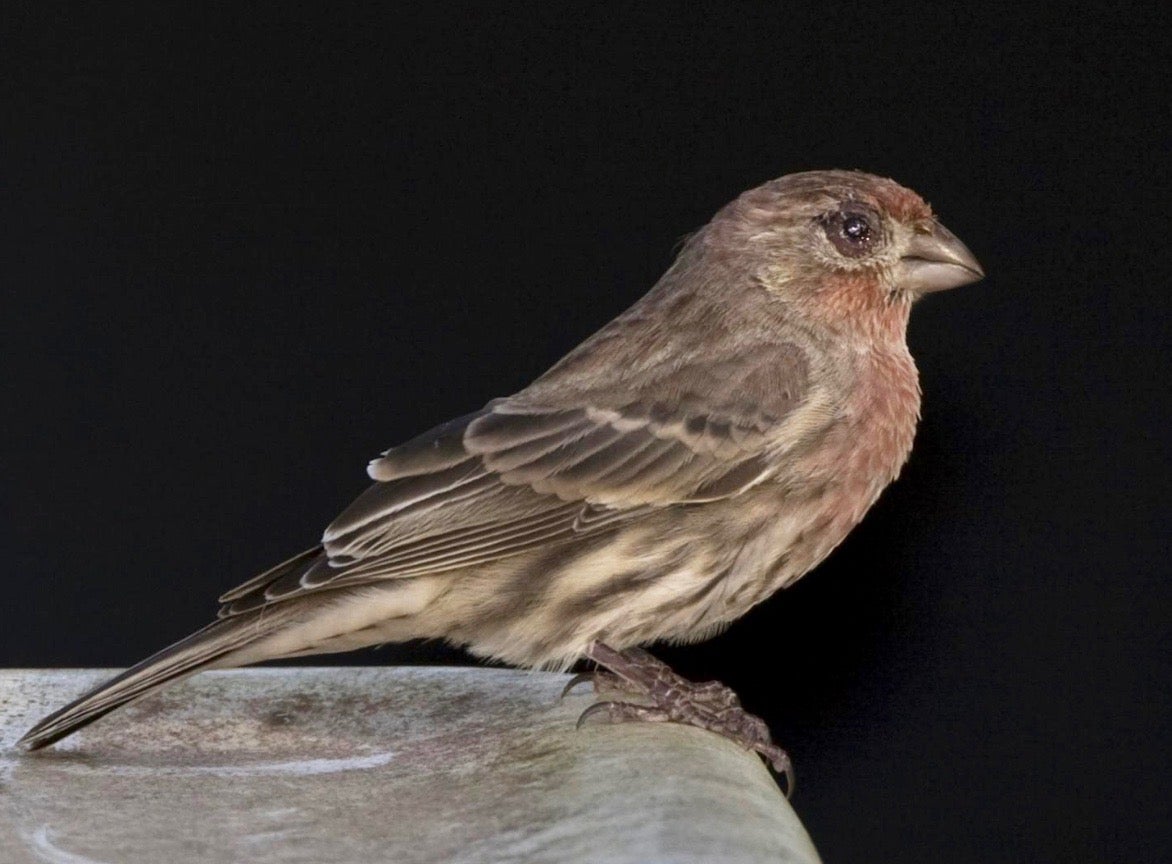ASU study reveals how bacteria can beat immune systems

It's often thought that harmful bacteria will respond to resistance by multiplying faster. But in a new study of a bacterium that causes conjunctivitis in house finches, researchers now believe that a pathogen's virulence and ability to replicate evolve separately and may manipulate a host's immune system. Photo by Geoffrey E. Hill
Humans and animals can develop resistance to harmful bacteria (pathogens) over time or with help from antibiotics or vaccines. And it’s usually assumed that the pathogens will respond by multiplying even faster.
However, in a new study published this week in Proceedings of the National Academy of Science, researchers from Arizona State University, along with colleagues from the University of Exeter and Auburn University, show that the evolution of more severe infections is not necessarily driven by bacteria replicating quicker.
The authors believe that once resistance spreads in host species, the bacteria’s virulence and replication rate can evolve separately, and virulence may be driven by other means, such as by manipulating host immune systems.
The research examined the spread of a bacterium called Mycoplasma gallisepticum (MG) among house finches — a common bird found at birdfeeders across the country. MG is a rare example of a well-studied, host-bacteria co-evolutionary race, where humans have not intervened with antibiotics or vaccines.
For more than two decades, ASU School of Life Sciences Professor Kevin McGraw has been studying diseases of finches. The researchers in this study discovered that strains of MG responded to resistance not by increasing in number but by increasing in strength and effectiveness of infection.
“Few have experimentally studied how the varied infection strategies of pathogens change over evolutionary time, so we weren’t sure what we would uncover in this system,” McGraw said. “Many have assumed previously that virulence and replication track one another as ‘full-court-press’ strategies for pathogen infection, but instead we found that one of them was prioritized over the other in the course of the evolutionary host-pathogen race.”
MG is a chronic respiratory illness that causes conjunctivitis — the infected bird’s eyes crust over and swell up, often closing completely. The sick birds can recover from the illness — if they do not first starve or fall victim to an unseen predator. The MG bacterium has been infecting house finches since the early 1990s when the disease spread rapidly and wiped out more than half of the U.S. East Coast house finch population. Within a decade, it had spread to parts of the West Coast.
However, after the initial crisis, the population stabilized. House finches began to develop resistance. But the disease has not disappeared.

House finch with severe symptoms of conjunctivitis. Photo by Geoff Hill, Auburn University
“We typically assume that pathogens respond to host resistance, including to vaccines, by increasing their rate of replication, allowing them to transmit faster to other hosts before they are cleared by their current host,” said Associate Professor Camille Bonneaud, with the University of Exeter. “However, our study shows that pathogens can evolve to become more virulent without increasing their rate of replication. We hypothesize that the increase in virulence that we observed in this study was driven by an improved ability of the pathogen to manipulate the host immune system in order to generate the symptoms necessary for its transmission.”
To understand how MG was responding to this resistance, McGraw and his colleagues tested both MG strains from early infections, before house finches were resistant, and newer strains. They found that rather than increasing their numbers, MG has found ways to be more efficient. Scientists have long predicted that a virus would use both strategies, rather than only one.
Understanding the interactions between harmful bacteria and their hosts can help scientists develop new treatments for bacterial infections.
“The results show us how we might design optimal treatments against a bacterial pathogen that has long encountered some form of resistance whether it be from the immune system of the natural host or an intervention like antibiotic use,” McGraw said. “In the case of a fight against MG, trying to knock back pathogen replication rate would not seem like the wise choice compared to targeting pathogen cell virulence.”
More Science and technology

ASU-led space telescope is ready to fly
The Star Planet Activity Research CubeSat, or SPARCS, a small space telescope that will monitor the flares and sunspot activity…

ASU at the heart of the state's revitalized microelectronics industry
A stronger local economy, more reliable technology, and a future where our computers and devices do the impossible: that’s the…

Breakthrough copper alloy achieves unprecedented high-temperature performance
A team of researchers from Arizona State University, the U.S. Army Research Laboratory, Lehigh University and Louisiana State…

